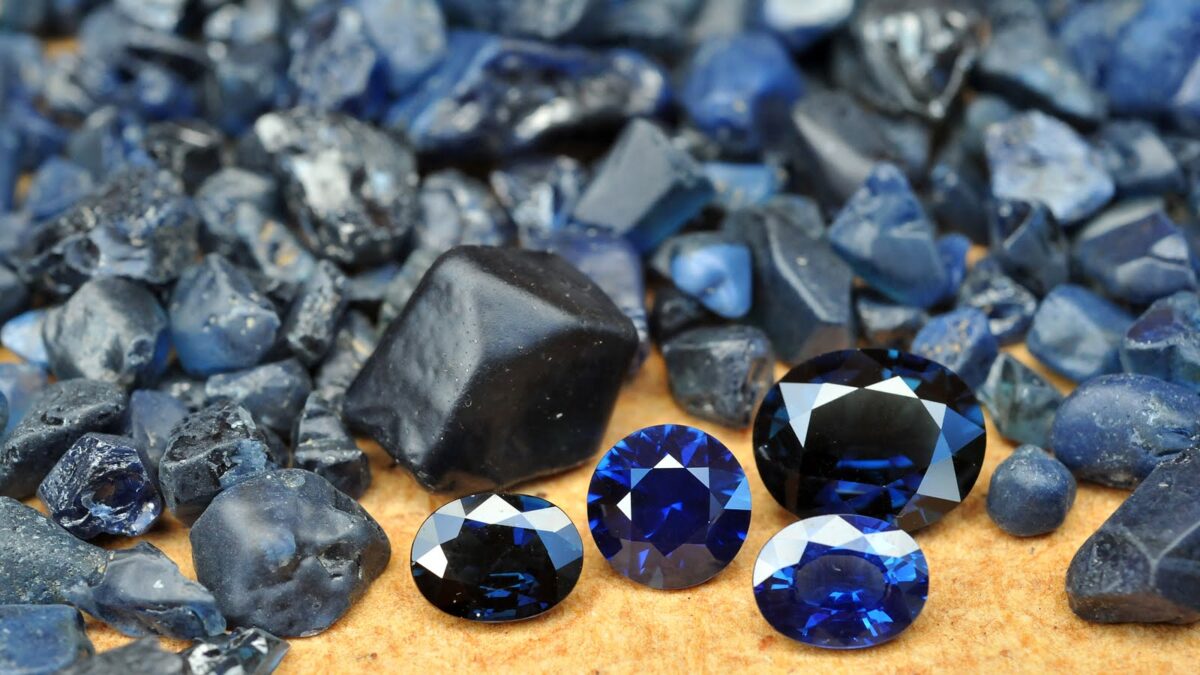How Much is a Blue Sapphire?

Blue sapphires are some of the most rare and sought-after gems in the world, so it’s important to know how much they cost, especially if you’re on the hunt for one. If you’re curious about the cost of a blue sapphire, you’ll find all the answers below!
General Facts About Sapphires
A sapphire is a variety of mineral corundum, which comes in four main colors—blue, red, yellow and white. The blue hue that gives sapphires their name can range from pale sky blue to deep cornflower. Most all sapphires are either mined or created in laboratories by fusing aluminum oxide and natural corundum. coloredS sapphires are heated to produce more vibrant colors. Most blue sapphires originate from Burma (today’s Myanmar), while most other color varieties are mined in Thailand, Sri Lanka and India. Star-shaped or six-rayed stones are known as star sapphires or asterias.
These come in shades of green, orange and purple. Sapphires have been used for thousands of years for jewelry making, but they were first used for decoration during China’s Tang Dynasty between 618 and 907 AD. They were also used as decoration on sword hilts during medieval times in Persia. Today, sapphires are one of the world’s most popular gemstones because they’re durable and relatively affordable compared with many other gems like diamonds. In fact, it takes about 150 tons of ore to make just one pound of sapphire!
Why Do Sapphires Cost So Much?
As with most jewels, there are several factors that influence how much a sapphire costs. These include: type of sapphire (color, clarity, cut), country of origin and size. What may be surprising to learn though is that price also depends heavily on whether or not it’s treated in any way. The quality of a sapphire can be tested through an examination called spectroscopy. This test analyzes several different elements in order to determine if they were added by man or if they naturally exist within it.
If they were added by man then it’s considered synthetic (lab created) and will cost less than 100% natural stones which are more rare to find and therefore very expensive . It’s important to note that even natural sapphires have been treated in some way before being set into jewelry; heat treatment is common as well as irradiation. So when you’re looking at two similar looking blue gems, one labeled synthetic and one labeled natural, don’t let those words fool you into thinking one is better than another! Both gems are still beautiful and unique – just like people!
How is Quality Assessed in a Sapphire?
A precious gem like sapphire exists on a spectrum of quality. Rubies are valued at only slightly less than diamonds and sapphires, but both rubies and sapphires can still be worthless depending on their color. Sapphire is prized for its vivid blue, but it can also be green or purple. Bright red corundum gems are ruby; brownish ones are called padparadscha (after an orange-colored lotus flower). Sapphires that fall within parameters for color and clarity—no cracks, inclusions or large flaws—can fetch thousands of dollars per carat, especially if they’re fancy blue colors like imperial or vivid aquamarine.
These stones can cost $20,000 to $50,000 per carat. But high-quality blue sapphires rarely come from places where they’re abundant. And often must be imported from countries such as Australia or Madagascar. And unlike diamonds. Which have been used as jewelry since ancient times, sapphires weren’t used until relatively recently—the first major use was in rings worn by Persian kings during Alexander’s conquest of Persia around 330 B.C.—so many collectors don’t want them because they haven’t been around long enough to become historic artifacts themselves. As a result, you’ll find many low-quality fancy colored stones priced well below what you’d pay for something rarer and more unique.
Are Colored Sapphires Different Than White Sapphires?
As with most colored gemstones, there are many different kinds of sapphires. In fact, if you look carefully into any collection of fancy sapphires. You’ll probably notice a range of colors from green to blue to purple to yellow. The main difference between colored and white sapphires is that they come from different locations. Colored sapphires come from locations such as Australia. East Africa and Sri Lanka while white ones are usually found in Thailand or Madagascar. However, even though they come from different areas, all sapphires share some common characteristics. Hardness (9 on Mohs scale), durability (they’re very resistant to scratches) and brilliance (they reflect light beautifully).
Are There Any Exceptions to the Rule That Sapphires are Expensive?
This couldn’t be further from the truth, especially in comparison to other gemstones. Many stones—even those that aren’t very popular—can cost more than blue sapphires, including chrysoberyl, Alexandrite and tanzanite. When you shop for your next piece of jewelry. Keep an eye out for quality in your purchase over price. Because buying something with lots of color for cheap may not be as great of a deal as it seems! In fact, it could end up costing you even more money down the road if it breaks or falls apart. Make sure you buy pieces made of high-quality materials. So they last longer and save you money in maintenance costs later on. Remember: The most expensive things are often not worth their price tag. Be smart about what you spend your money on!










